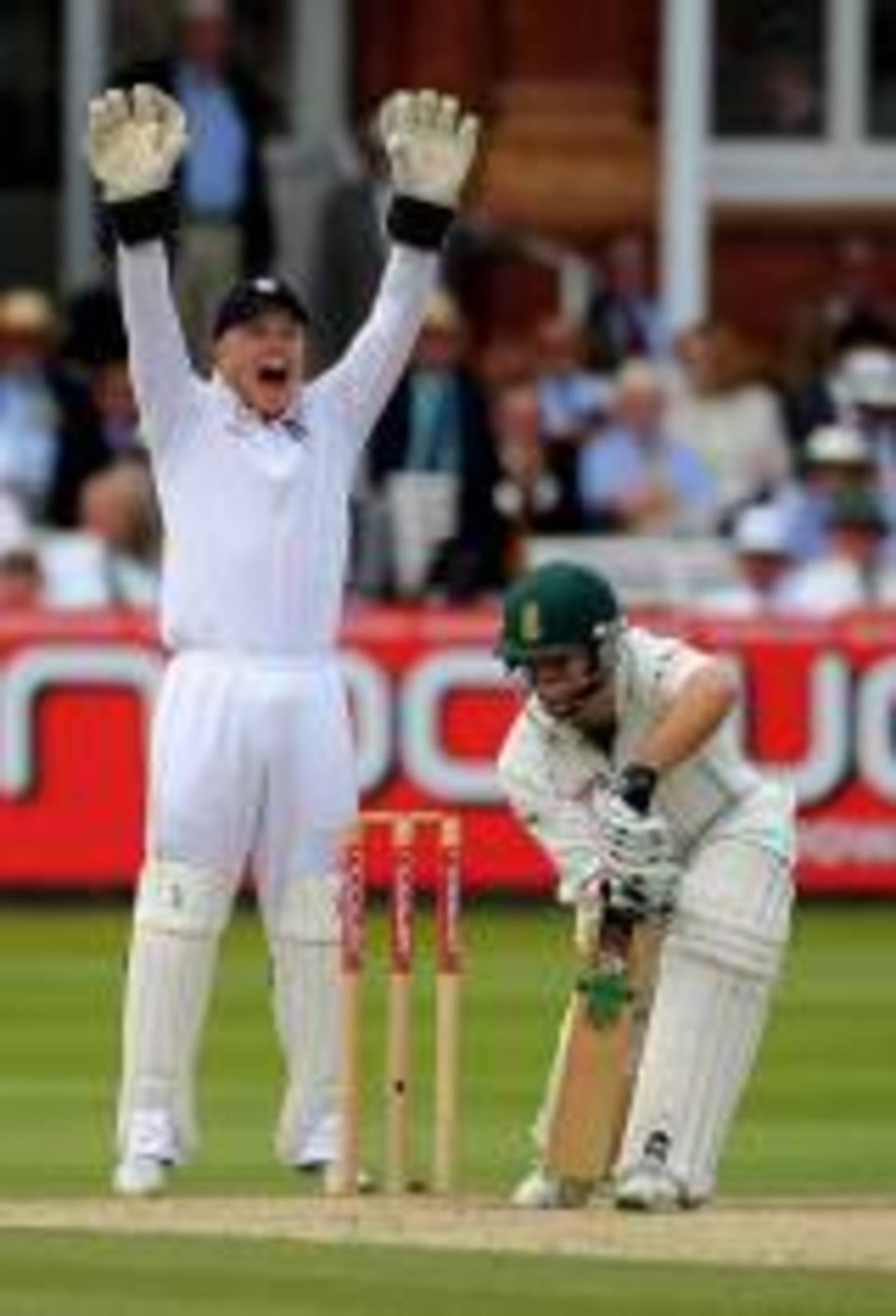A test for the ICC
If the world’s cricket administrators are sincere in wanting to preserve Test cricket as the pinnacle of the game, it’s not a Test championship that we need to rekindle interest but action to restore the balance between bat and ball
Mike Holmans
25-Feb-2013

Getty Images
The England-South Africa Test series showed Test cricket at its best and worst.
The Edgbaston Test was almost as good as Test cricket gets. South Africa gradually established a strong position, then there was an aggressive counterattack from Pietersen and Collingwood which put England in the box seat, bringing forth a truly great innings from Smith to win the game and series. All it lacked as a match were some good spin bowling and two or three more South African wickets to make the last hour tenser. If Test cricket were always like this, grounds round the world would be packed.
On the other hand, though, we had Lord’s.
Stephen took me to task for describing day four (and five, for that matter) as “enervatingly tedious”, inviting me to appreciate the grit and determination of the South Africans as they saved the game, but I remain unmoved.
I can certainly praise the application, patience and concentration which the South Africans demonstrated, but as a spectacle it lacked just about everything. Two blokes patting steady, disciplined bowling around on a placid pitch, with no prospect that a wicket will fall unless a batsman has a brainstorm and no likelihood that an aggressive shot will be played is my idea of cricket-watching hell.
Stephen drew a parallel with Atherton’s two-day match-saving 185* at Jo’burg. Since I wasn’t at the Wanderers, I can’t really comment on whether Atherton’s epic was worth watching, but I strongly suspect that it was pretty bum-numbing fare for most of the hundred or so hours it seemed to last. The place to watch admirable innings like that is the members’ bar, where one can have a good natter with one’s friends and keep a weather eye on progress on the TV screen in case anything actually happens.
It’s not that I don’t appreciate a good fight for survival. The best session of the first two Tests was the third morning at Headingley, when only 52 runs were scored for the loss of one wicket. Painfully slow it may have been in scoreboard terms, but the ball was swinging, Anderson was bowling very well and the other bowlers were making things happen. The batsmen, though, were more than equal to it, using every ounce of wit and skill at their disposal. That session on its own confirmed that South Africa should win the series because they were the better team.
I’ve relished similar things at Headingley before, notably Dilip Vengsarkar in 1986 and Rahul Dravid in 2002, when survival was match-winning given the difficult conditions for batting. The terror tracks of Headingley in the 1980s may have produced low-scoring games which were over well inside four days, but by heck there was some great cricket involved.
But that was not what was happening at Lord’s. After that match, even Neil McKenzie said that he was pleased to have got his name on the board, but he wouldn’t be remembering it as one of his great achievements.
I’m not criticising the South Africans: they simply did what the game situation demanded and did it very well, probably much better than England would have done.
The villain was the groundsman, as it was in March at Chennai when the only enlivening thing in an otherwise pointless contest was Sehwag’s blistering 300.
Pitches like the ones served up at Chennai and Lord’s are not fit for serious cricket. They may suffice for ODIs, but no-one has ever suggested that ODIs are supposed to be an equal contest between bat and ball. Michael Holding, Allan Donald, or Shane Warne would carry on taking wickets on pitches like that because that’s just what they do, but ordinary Test-class bowlers have no chance against Test-class batsmen. It should not be necessary to be an all-time great to have some prospect of success.
If the world’s cricket administrators are sincere in wanting to preserve Test cricket as the pinnacle of the game, it’s not a Test championship that we need to rekindle interest but action to restore the balance between bat and ball.